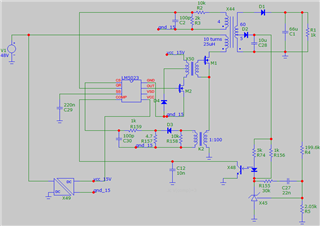Other Parts Discussed in Thread: SE555, LM555, NE555
hello,
I made a small prototype that implements the scheme shown in the figure below to convert an input 48Vdc (40Vin-60Vin) into 245Vdc for 65W of power.
 As you can see, the LM5023 IC power supply is isolated from the primary 48Vdc power supply and the VSD pin is left floating.
I encountered the following problem. When I apply a short circuit on the output, the power mosfet continues to be driven with a short duration pulses, causing the mosfet to overheat very quickly.
As you can see, the LM5023 IC power supply is isolated from the primary 48Vdc power supply and the VSD pin is left floating.
I encountered the following problem. When I apply a short circuit on the output, the power mosfet continues to be driven with a short duration pulses, causing the mosfet to overheat very quickly.
Not being able to use the auxiliary winding to power the IC, how can I fix this?

